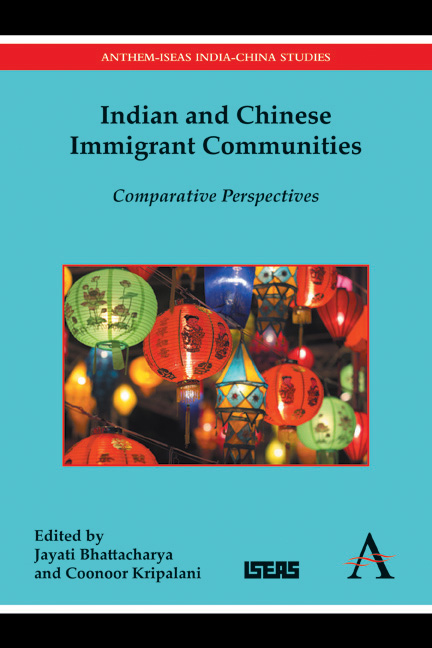Book contents
- Frontmatter
- Contents
- Foreword
- Acknowledgements
- Introduction
- Section I Historical Antecedents and the Question of Nationality
- 1 Blackbirders Refitted? The Journeys of Capitalists and Labourers in the Indian Ocean, 1830s–1930s
- 2 Connecting Diaspora Histories: Indians and Chinese in Colonial Malaya
- 3 Chinese and Indian Diaspora: Some Common and Not-So-Common Cultural Processes
- Section II The Meeting Ground: Indians and Chinese in Southeast Asia
- Section III Indians in China and Chinese in India
- Section IV Across the Globe: Indian and Chinese Diasporas
- Postscript Shifting Worlds and Changing Identities: The Reshaping of the Chinese-Indian Communities in India after the 1962 “Sino-Indian Incident”
- List of Contributors
- Index
2 - Connecting Diaspora Histories: Indians and Chinese in Colonial Malaya
from Section I - Historical Antecedents and the Question of Nationality
Published online by Cambridge University Press: 05 December 2015
- Frontmatter
- Contents
- Foreword
- Acknowledgements
- Introduction
- Section I Historical Antecedents and the Question of Nationality
- 1 Blackbirders Refitted? The Journeys of Capitalists and Labourers in the Indian Ocean, 1830s–1930s
- 2 Connecting Diaspora Histories: Indians and Chinese in Colonial Malaya
- 3 Chinese and Indian Diaspora: Some Common and Not-So-Common Cultural Processes
- Section II The Meeting Ground: Indians and Chinese in Southeast Asia
- Section III Indians in China and Chinese in India
- Section IV Across the Globe: Indian and Chinese Diasporas
- Postscript Shifting Worlds and Changing Identities: The Reshaping of the Chinese-Indian Communities in India after the 1962 “Sino-Indian Incident”
- List of Contributors
- Index
Summary
Writing from his base in South Africa in 1905, Mahatma Gandhi commented on the position of Indian and Chinese migration to Singapore. “Singapore can be said to be as near to the Chinese as it is to us. […] Despite this,” Gandhi lamented, “our people there cannot hold their own against the Chinese.” Chinese were wealthier than Indians in Singapore, and – Gandhi was at pains to point out – “some even own motor cars.” Gandhi then provided the readers of Indian Opinion with comparative statistics, showing that the number of Chinese arrivals in Singapore was nearly ten times greater than the number of Indian arrivals. These statistics led Gandhi to observe that “this shows how much is yet to be achieved by our people in the matter of emigration to, and settling in, foreign territories.” “It is a shame,” Gandhi concluded, “that we cannot keep abreast of the Chinese.”
More than anywhere else in the world, the Straits Settlements and Malaya provided a meeting ground for the Indian and Chinese diasporas in Asia. Overall, more Chinese journeyed to Malaya than to any single destination in the world between 1840 and 1940: around eleven million in all. Malaya, similarly, attracted more Indian emigrants (around four million) than any other territories except Burma and Ceylon. This chapter examines that Indian labour diaspora in Malaya, paying particular attention to the comparisons that were made – at the time and subsequently – with their Chinese counterparts.
The starting point for the chapter is my recent research on Tamil diasporas in Southeast Asia. In the course of this work, I have confronted constantly the problem of comparison with the concurrent history of Chinese migration: a comparison that is not merely analytically interesting, but one that suffuses the historical record. British colonial officials and Indian and Chinese intellectuals made constant comparisons at the time between Indian and Chinese migration.
- Type
- Chapter
- Information
- Indian and Chinese Immigrant CommunitiesComparative Perspectives, pp. 13 - 24Publisher: Anthem PressPrint publication year: 2015



